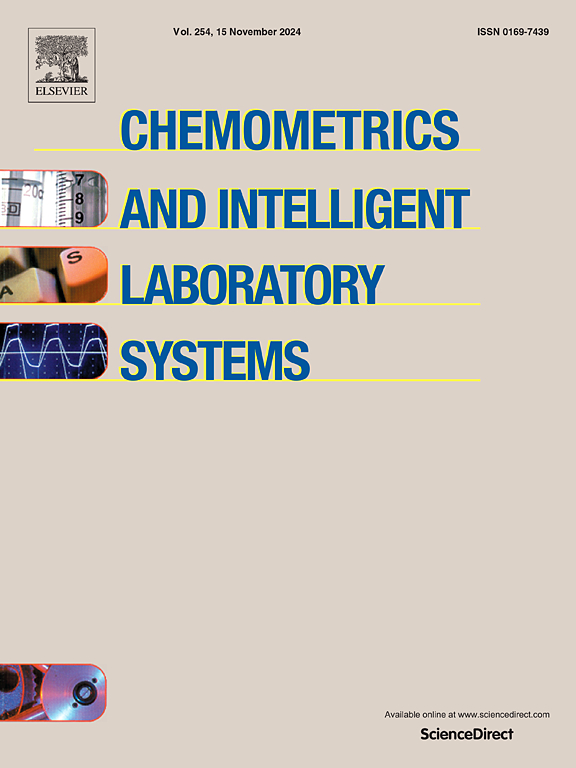Estimation of soil organic carbon content using visible and near-infrared spectroscopy in the Red River Delta, Vietnam
IF 3.7
2区 化学
Q2 AUTOMATION & CONTROL SYSTEMS
Chemometrics and Intelligent Laboratory Systems
Pub Date : 2024-10-22
DOI:10.1016/j.chemolab.2024.105253
引用次数: 0
Abstract
Accurate estimation of Soil Organic Carbon (SOC) is vital for assessing soil fertility, health, and carbon sequestration. Visible and Near-Infrared (Vis-NIR) spectroscopy has gained popularity worldwide for SOC estimation due to its cost-effectiveness and environmental benefits. However, inconsistencies arise from varying preprocessing techniques and regression models applied across different datasets and regions. Few studies explore combinations of spectral preprocessing, modeling algorithms, and resampling techniques. This study presents the first SOC estimation using Vis-NIR spectroscopy in the Red River Delta, Vietnam. We assessed estimation performances incorporating fifteen preprocessing techniques, four regression models, and three resampling methods to identify the most effective strategies. Standard Normal Variate (SNV) emerged as the top preprocessing technique, while Partial Least Squares Regression (PLSR) demonstrated the highest accuracy with minimal discrepancies between calibration and validation. Regarding resampling methods, repeated cross-validation (repeatedcv) proved most robust, with simple cross-validation as an alternative. By utilizing SNV, PLSR, and repeatedcv, we achieved the first successful Vis-NIR spectroscopy-based SOC estimation in the Red River Delta and Vietnam. This approach satisfied stringent statistical criteria for predictive models, yielding validation performance metrics of R2 = 0.740, RMSE = 0.166, RPD = 2.337, and RPIQ = 2.321. Our findings highlight the importance of optimizing preprocessing, regression, and resampling techniques for accurate Vis-NIR spectroscopy-based SOC prediction.
利用可见光和近红外光谱估算越南红河三角洲的土壤有机碳含量
准确估算土壤有机碳(SOC)对于评估土壤肥力、健康和固碳至关重要。可见光和近红外(Vis-NIR)光谱法因其成本效益和环境效益而在全球范围内受到广泛欢迎。然而,不同数据集和不同地区所采用的预处理技术和回归模型各不相同,导致结果不一致。很少有研究探讨光谱预处理、建模算法和重采样技术的组合。本研究首次利用可见光-近红外光谱对越南红河三角洲的 SOC 进行了估算。我们评估了十五种预处理技术、四种回归模型和三种重采样方法的估算性能,以确定最有效的策略。标准正态变异(SNV)成为最佳的预处理技术,而偏最小二乘回归(PLSR)则表现出最高的准确性,校准和验证之间的差异最小。在重新取样方法方面,重复交叉验证(repexcv)被证明是最稳健的,而简单交叉验证则是另一种选择。通过利用 SNV、PLSR 和 repeatedcv,我们首次在红河三角洲和越南成功地实现了基于可见近红外光谱的 SOC 估算。该方法符合预测模型的严格统计标准,验证性能指标为 R2 = 0.740、RMSE = 0.166、RPD = 2.337 和 RPIQ = 2.321。我们的研究结果凸显了优化预处理、回归和重采样技术对基于可见近红外光谱的 SOC 精确预测的重要性。
本文章由计算机程序翻译,如有差异,请以英文原文为准。
求助全文
约1分钟内获得全文
求助全文
来源期刊
CiteScore
7.50
自引率
7.70%
发文量
169
审稿时长
3.4 months
期刊介绍:
Chemometrics and Intelligent Laboratory Systems publishes original research papers, short communications, reviews, tutorials and Original Software Publications reporting on development of novel statistical, mathematical, or computer techniques in Chemistry and related disciplines.
Chemometrics is the chemical discipline that uses mathematical and statistical methods to design or select optimal procedures and experiments, and to provide maximum chemical information by analysing chemical data.
The journal deals with the following topics:
1) Development of new statistical, mathematical and chemometrical methods for Chemistry and related fields (Environmental Chemistry, Biochemistry, Toxicology, System Biology, -Omics, etc.)
2) Novel applications of chemometrics to all branches of Chemistry and related fields (typical domains of interest are: process data analysis, experimental design, data mining, signal processing, supervised modelling, decision making, robust statistics, mixture analysis, multivariate calibration etc.) Routine applications of established chemometrical techniques will not be considered.
3) Development of new software that provides novel tools or truly advances the use of chemometrical methods.
4) Well characterized data sets to test performance for the new methods and software.
The journal complies with International Committee of Medical Journal Editors'' Uniform requirements for manuscripts.

 求助内容:
求助内容: 应助结果提醒方式:
应助结果提醒方式:


